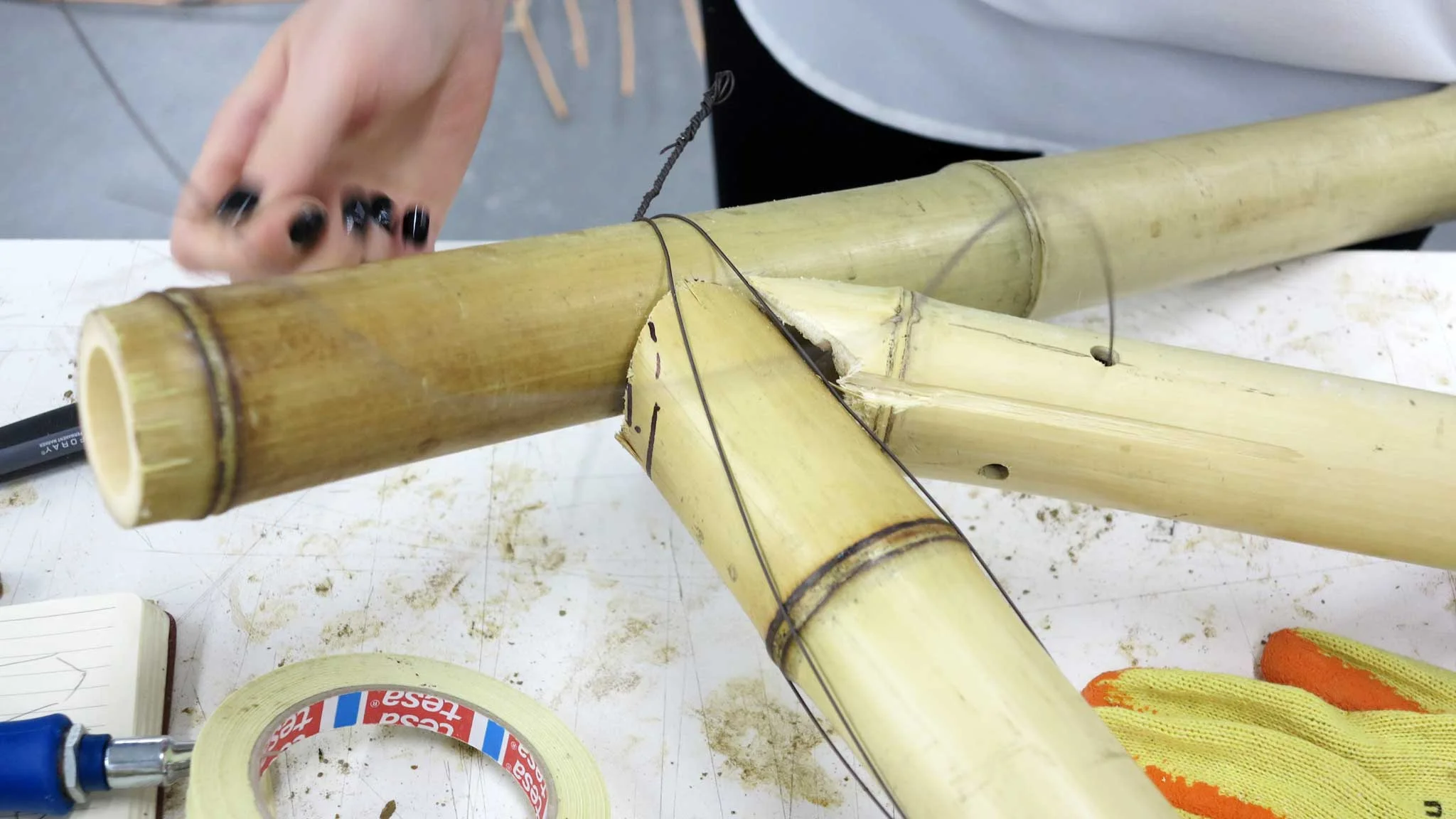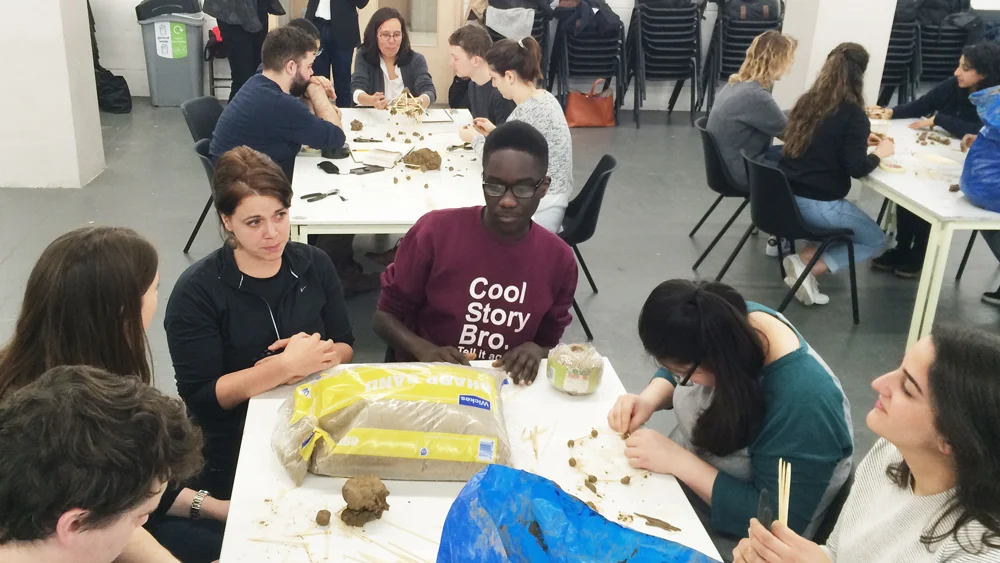This week Yasmeen Lari was in town. Yasmeen is Pakistan's first female architect with a body of work to behold. Alongside her passion for heritage buildings, she focuses on disaster resilience - everything from redesigning improved 'chula' (cookstoves), which offer healthy and dignified alternatives to traditional cooking methods to constructing zero carbon housing for flood victims.
Yasmeen increasingly works with women, believing they hold the key to economic regeneration within disadvantaged communities. She is training an 'army' of female barefoot architects, who will in turn pass on the baton.
Needless to say, when the RIBA invited us to support Yasmeen's making workshop, to share our knowledge of natural sustainable materials with students from the Stephen Lawrence Charitable Trust and The CASS, we jumped to attention.
“Our work in Bangladesh features a variety of locally sourced natural materials including bamboo, jute, palm leaf and earth. Natural is the operative word. There are no straight lines in nature.”
When working with bamboo for example you need to deal with tapering culms, curvatures and uneven distances between diaphragms - this all adds a high level of complexity to jointing. It is never as easy as replicating the digital model in real life.
Similarly, working with earth requires craftsmanship and respect for this most basic of materials. It needs to breathe. Achieving the right composition, using additives for strength and water resilience is just as much an art as a science. It also requires a great understanding of the local context. Cactus juice might be appropriate in Texas, US but it's not readily available in Dinajpur Bangladesh. You will need to look to the environment and to the community for answers.
In fact, this is exactly how we stumbled upon mulch from the Bijla tree which performed well against synthetic additives in our earthen plaster field tests. It was a local rice farmer from Sundarban village who suggested we investigate this natural 'glue', once used to bind kites.
We champion these materials for a number of reasons. They're low cost, environmentally friendly and beautiful.
“Earth is not a ‘poor man’s’ material, in fact we believe there’s nothing richer than a hand-finished plaster.”
For these reasons, we were excited to join Yasmeen in introducing their power and potential to the next generation of architects. A group of students from as young as 14, eager to learn more.
The 4-hour workshop was a journey through a series of building techniques, utilising three core elements: bamboo, earth and willow. Split into small groups the students were asked to build models, which explored a range of design principles and allowed for experimentation.
Focusing on one section, a particular node or using a combination of elements, the teams were then asked to create a 1:2 scale prototype. The majority began with bamboo, many testing out variations on fish mouth joints. The students quickly understood the level of skill required to connect culms, which is often a complex meeting of shapes. Others attempted throwing brick 'slugs' experimenting with straw as an additive, or weaving willow panels to act as a base for a wattle and daub construction.
The session concluded with a mini critique to discuss the finished structures and best practice.
One of the most rewarding aspects of the day were the one to one conversations about the wider context... cost considerations when working with low-income populations... how climate change and mass migration are affecting communities and adding additional pressures on the built environment... achieving a balance between the tangible and intangible...
“Architecture does not stand in isolation. Every decision, every move has an impact. It was refreshing to hear students debate the wider implications of their discipline.”
Hats off to everyone involved in the day's activities. Let's hope we see more schools of architecture take up the mantle.
Find out about our work with natural materials:
Author: J. Ashbridge






